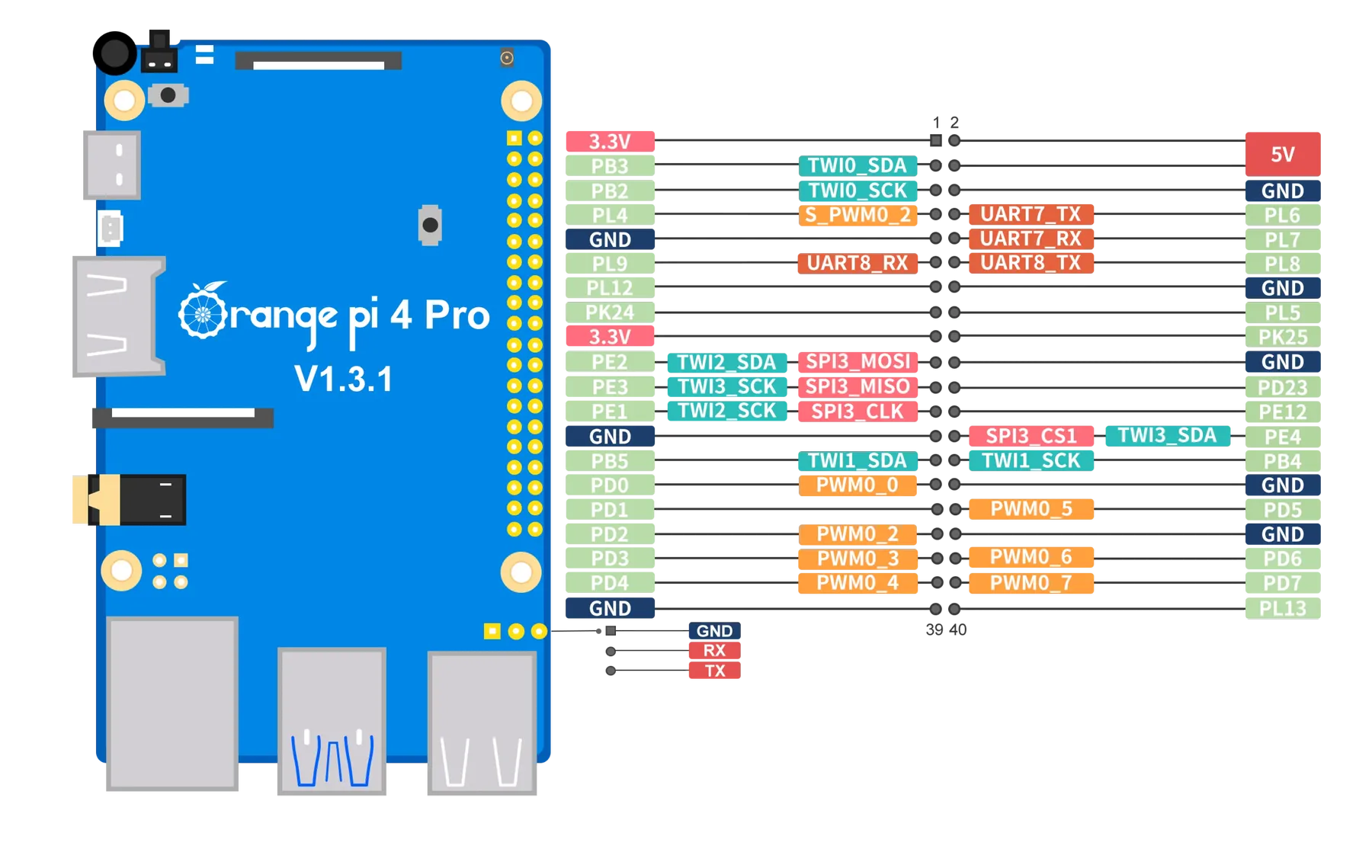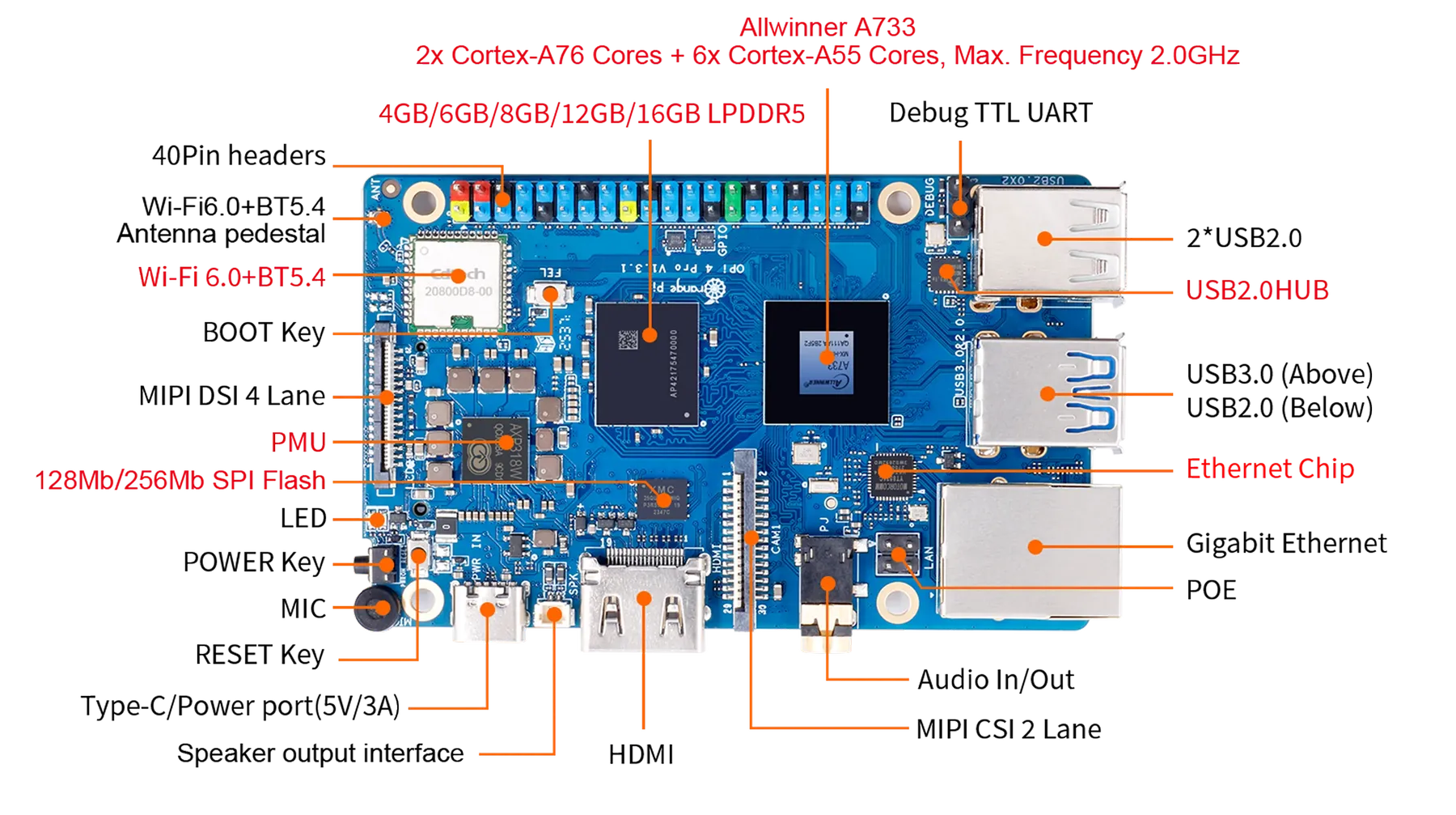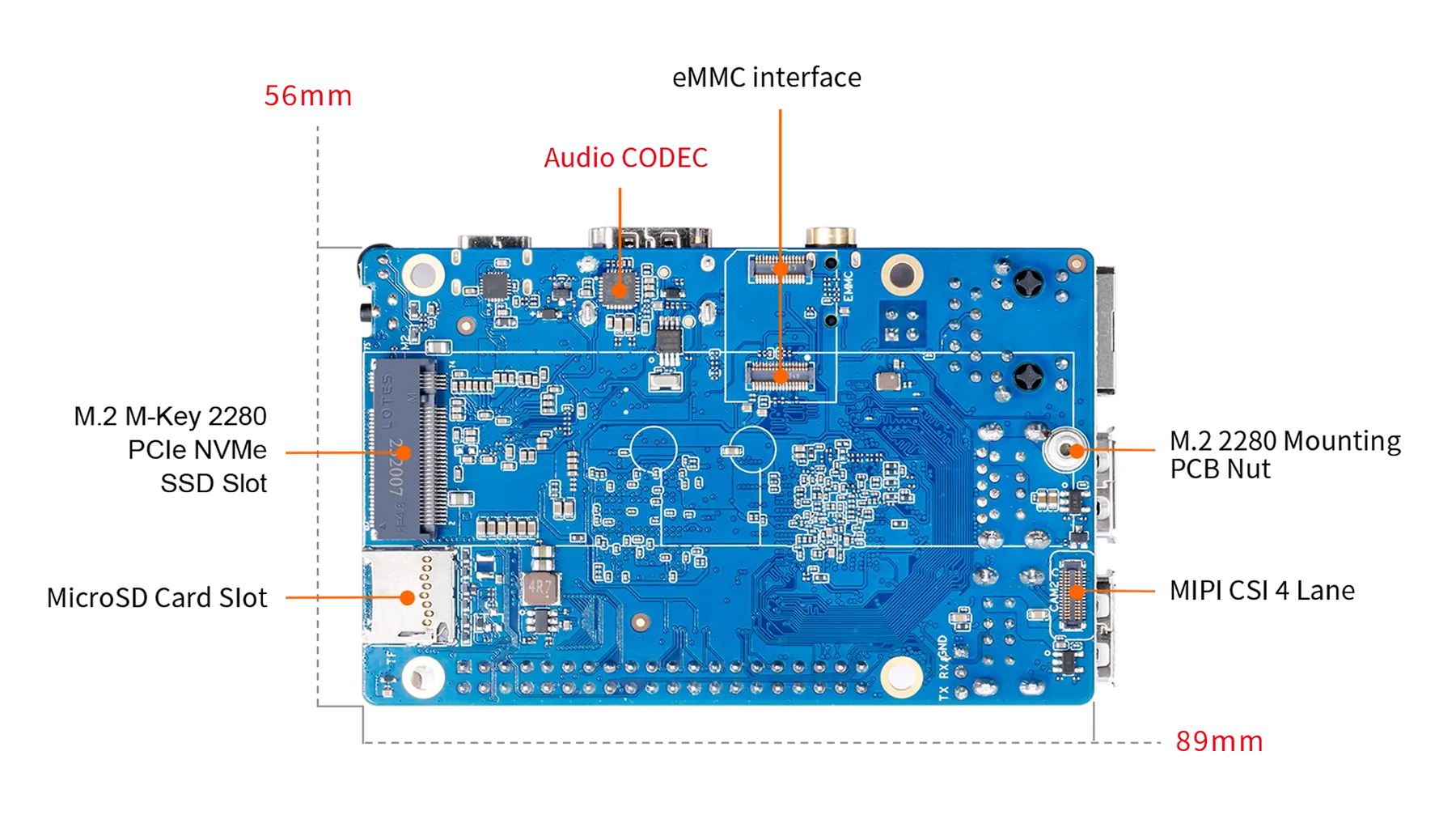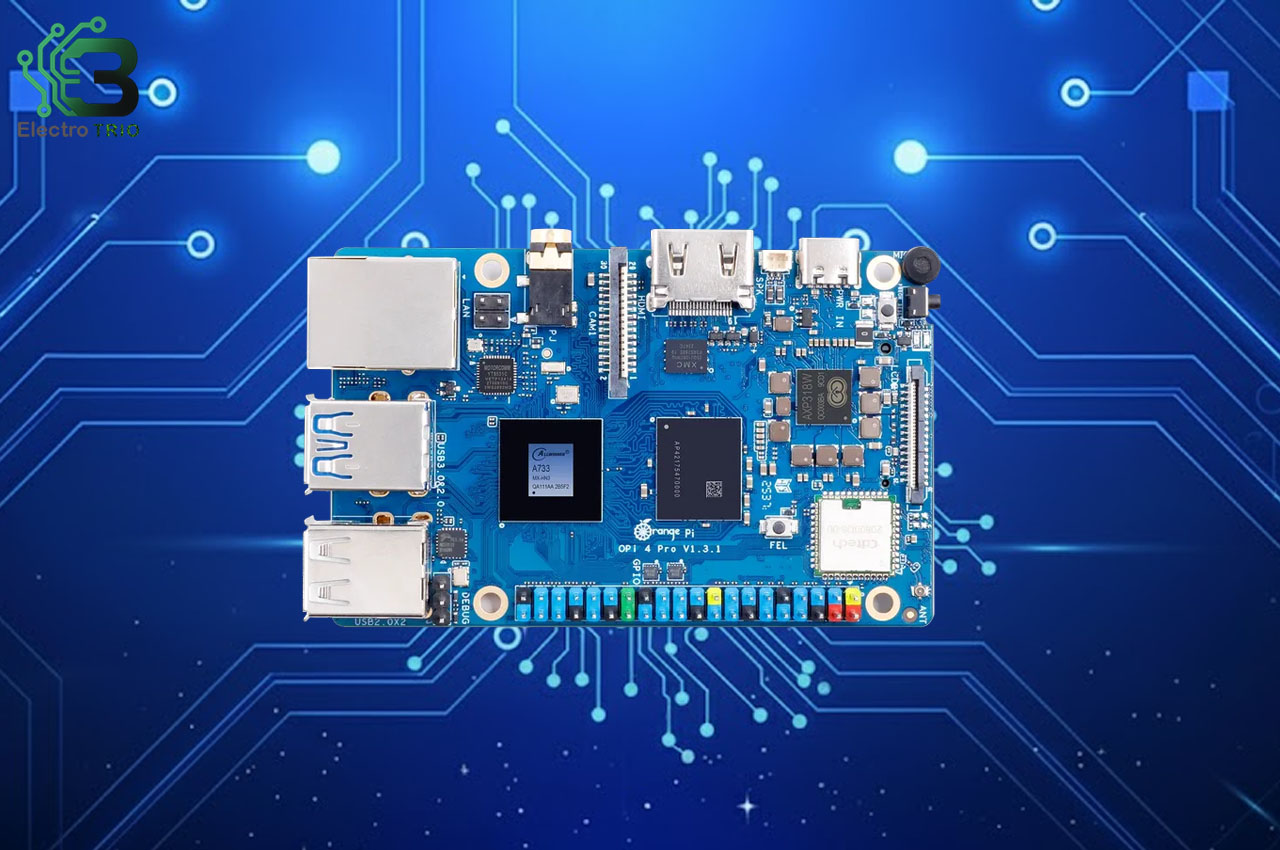The Orange Pi 4 Pro is developed by the Orange Pi high-performance, single-board computer, based on the Allwinner A733 SoC, which consists of two ARM Cortex-A76 cores, six Cortex-A55 cores, and a dedicated real-time RISC-V E902 core, which is typically more powerful than normal hobby boards. The Orange Pi 6 Plus is superior to the Orange Pi 4 Pro, as it has a higher-performing processor of 12 cores, up to 64GB of LPDDR5 RAM, up to 45 TOPS of AI processing performance, and higher connectivity rates, whereas the 4 Pro is cheaper and affordable to use in moderate projects.

There is an option of loading up to 16 GB of LPDDR5 RAM in the Orange Pi 4 Pro. Storage can be customised: as well as a microSD slot, an optional eMMC slot (16-128 GB) and an M.2 2280 (M-key) NVMe SSD can be used via a PCIe 3.0 socket, providing desktop-like speeds in storage.
There is a very strong connection, including Gigabit Ethernet (supports PoE), WiFi 6 and Bluetooth 5.4 connections. On the display side, it has an HDMI 2.0 output (4K60Hz) and a MIPI-DSI interface. It also features two-point 1504-pin MIPI-CSI camera interfaces and a full-size 40-pin GPIO header to maintain compatibility with most of the Raspberry Pi-compatible add-ons. The USB has one USB 3.0 host port and three USB 2.0 ports, and a USB-C power entry.



Practically speaking, this board presents an attractive combination of functionalities to do edge computing, AI inference, media centres or DIY server setups. The Orange Pi 4 Pro, with up to 3 TOPS (or more) of onboard NPU for AI tasks, is also aimed at smarter, more complex projects on the one hand, and not merely serving the hobby market on the other hand.
Orange Pi 4 Pro is also versatile in its purpose since it is compatible with several operating systems, such as Orange Pi OS, Ubuntu, Debian, and Android. On the Orange Pi site, images and documentation of official software are on the Orange Pi service and support section. Nonetheless, according to community feedback, part of the OS download links are incomplete or absent, and some of the drivers (including WiFi and GPU) are yet to be optimised. As the hardware is robust, the software ecosystem remains in its early phases, and thus users might be forced to use community forums or create images with the needed level of stabilisation.
As of writing, the listing on the official product page shows the board with a base price of $35 (4 GB RAM variant) and more expensive when increasing the memory variation in size factor, whereby there were $40 (6 GB), $45 (8 GB) and $55 (12 GB) variants. On Amazon, listings indicate the 8 GB model is shown but currently marked as “currently unavailable”, suggesting limited stock or delayed availability. On AliExpress, the board is also listed (via links from the official site) and was available at the $35–$45 range for early units, although visibility and exact pricing vary by seller and shipping.
